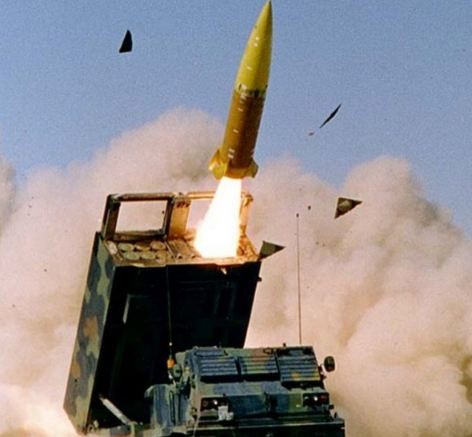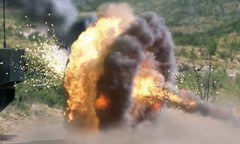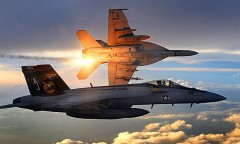By Arthur Dominic J. Villasanta , | April 13, 2017

ATacMS launch.
The U.S. Army is responding to the threat posed by upcoming Russian T-14 Armata main battle tanks (MBTs) firing tank shells with nuclear warheads from their 152 mm gun by considering the development of shotgun-like hypersonic projectiles that can pierce the Armata's armor with ease.
Like Us on Facebook
The army's new "Kinetic Energy Projectile (KEP)," which is still under development, is a tungsten warhead that bursts into a mass of flaming, metal fragments capable of easily piercing most conventional types of armor, including the Armata's.
In essence, KEP will be the equivalent of dozens of armor piercing discarding sabot (APDS) rounds striking a tank simultaneously. APDS is the kinetic energy projectile relied on by most of today's modern MBTs such as the Armata and the U.S. M1A2 Abrams to kill enemy tanks.
KEP will be mounted as a warhead onto an existing army missile system. The system of choice for this new weapon appears to be the army's huge MGM-140 Army Tactical Missile System (ATacMS) that blasted Iraqi Army positions in the Iraq War of 2003.
The latest version of ATacMS -- MGM-168 ATacMS-Block IVA -- can send its 230 kg unitary warhead to destroy a target up to 300 km distant flying at a speed of Mach 3 (3,700 km/h).
KEP was described as "a big shotgun shell" travelling at "Mach 3 to Mach 6" to pierce its targets, according to Maj. Gen. William Hix, Director, Strategy, Plans and Policy, Office of the Deputy Chief of Staff, G-3/5/7, U.S. Army.
Others have described KEP as a "devastating weapon" that destroys anything in its path.
KEP was developed by the air force and Lawrence Livermore National Laboratory (LLNL) in 2013. Primarily funded by the U.S. Department of Energy, LLNL is a premier research and development institution for science and technology applied to national security.
Gen. Hix, however, said KEP was in a conceptual phase and not yet an actual program. But it will prove invaluable in countering Russia's push to develop small Russian nuclear weapons capable of being fired from 152 mm tank guns such as those that will arm a future iteration of the T-14.
Russia might have begun work on developing a 152 mm nuclear tank shell to be fired from a future version of the T-14, according to some U.S. weapons experts.
This "nuclear tank" and its new 152 mm main gun are one of the end products on Russian advances in low-fission, high-fusion, sub-kiloton tactical nuclear technology. The Russians are expending significant resources to miniaturize nuclear warheads that arm their ballistic missiles and develop sub-kiloton low-yield warheads.
The development of a practical 152 mm sub-kiloton low-yield round will enable this munition to be used in the next generation Armata and other gun platforms such as the 2S35 Koalitsiya-SV, a 152 mm self-propelled gun based on the Armata chassis.
-
Use of Coronavirus Pandemic Drones Raises Privacy Concerns: Drones Spread Fear, Local Officials Say

-
Coronavirus Hampers The Delivery Of Lockheed Martin F-35 Stealth Fighters For 2020

-
Instagram Speeds Up Plans to Add Account Memorialization Feature Due to COVID-19 Deaths

-
NASA: Perseverance Plans to Bring 'Mars Rock' to Earth in 2031

-
600 Dead And 3,000 In The Hospital as Iranians Believed Drinking High-Concentrations of Alcohol Can Cure The Coronavirus

-
600 Dead And 3,000 In The Hospital as Iranians Believed Drinking High-Concentrations of Alcohol Can Cure The Coronavirus

-
COVID-19: Doctors, Nurses Use Virtual Reality to Learn New Skills in Treating Coronavirus Patients











